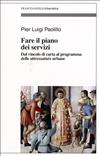
In Lombardia la vas ha avuto un’ampia diffusione, coinvolgendo l’intero territorio regionale, per tutte le scale e forme di piano. Molti comuni, a seguito dell’adesione ad Agenda 2000, hanno iniziato a divulgare le proprie Relazioni sullo stato dell’ambiente. A fronte delle tante aspettative riposte nella vas, l’articolo prova a tracciare un bilancio complessivo dell’applicazione di questo strumento in Lombardia. Un’urbanistica virtuosa per vas selettive, giudicatrici, binarie, inequivocabili, e perciò buone scelte per l’intera Regione? La realtà è ben diversa. Confrontando, con un’analisi multidimensionale, tutti i documenti di scoping delle vas elaborati dai comuni lombardi, emerge un quadro deludente. È l’ennesima disfatta disciplinare dinnanzi all’empirismo destrutturato corrente: l’impossibilità di introdurre una vas selettiva, giudicatrice, binaria, inequivocabile


